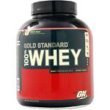August 14th, 2007
Mens Health Fitness Challenge
Men’s Health has a great fitness challenge in their latest issue. The challenge is also available on their website, here. Measure how many reps you can perform of single leg squats, chinups, pushups, measure your vertical jump height and how fast you can run a mile. Enter your scores in the MH Fit Calculator and get your MH fitness level evaluation. That simple.
However, although the exercises are simple, they are all very demanding. The average guy, for example, is only able to rip out a couple of single leg squats in a row. Pullups are similar, with most guys forgoing this exercise at the gym, in favour of lat pulldowns (which aren’t as effective IMHO). Pushups, on the other hand, aren’t uncommon. But while you might feel fairly comfortable with them, can you squeeze out 30 reps? How about 40 or even 50!? Vertical jump practice is something that I bet you rarely do. And while you might get in a 5k run here and there, the one mile challenge is an all-out run your fastest test of will power to hold out till the end.
It will be interesting to see the results when MH tabulate the average numbers from their readership. My suggestion is to try the challenge now and throughout the next 3 weeks, work up to some higher numbers by practicing the exercises as part of your normal routine. Instead of running the 5k as you normally do on a Saturday, do some sprints or 400m intervals. Work pullups into your warmup and try to get 30 reps, even if broken. Sub inclined bench presses for 3 sets of max reps pushups. Work on your single leg squats instead of some other leg press exercise you have in your normal getup. After 3 weeks is up, go another round with the challenge and see how well you’ve improved because if you keep at it, you will see a huge difference.
 Losing weight is a commitment. Unfortunately it’s the hard truth - you can’t expect much from a one or two week South-Beach diet. Losing weight means having the will to deny yourself many of the things you may like. Chocolate bars, beer, croissants, all the good stuff has to be removed from your diet, and not just for a couple weeks - staying on the course and staying committed is the number one road to success. Mix in some cardio and resistance training and you’ll be seeing the weight drop off in no time.
Losing weight is a commitment. Unfortunately it’s the hard truth - you can’t expect much from a one or two week South-Beach diet. Losing weight means having the will to deny yourself many of the things you may like. Chocolate bars, beer, croissants, all the good stuff has to be removed from your diet, and not just for a couple weeks - staying on the course and staying committed is the number one road to success. Mix in some cardio and resistance training and you’ll be seeing the weight drop off in no time.

